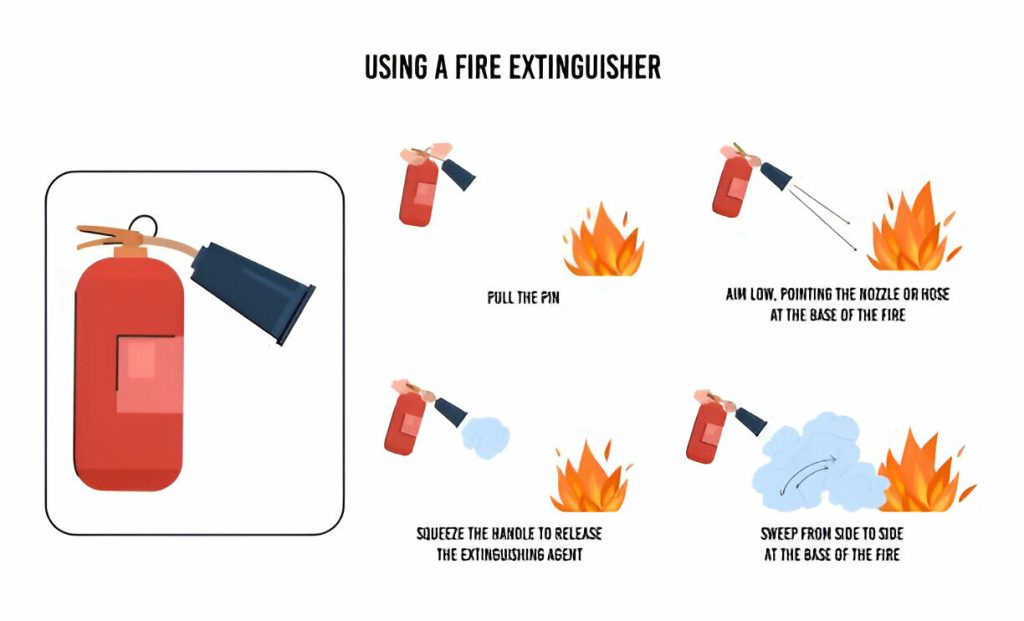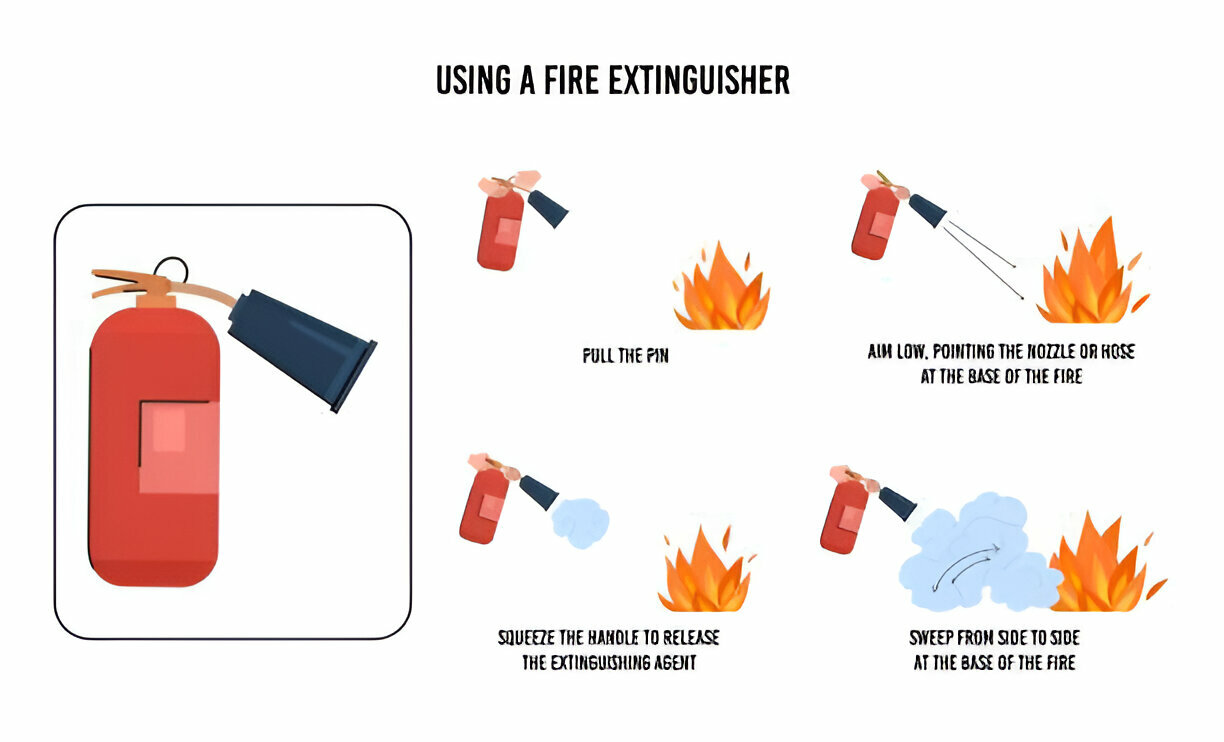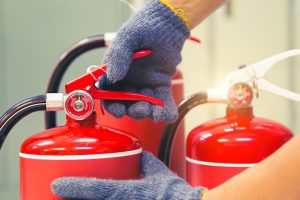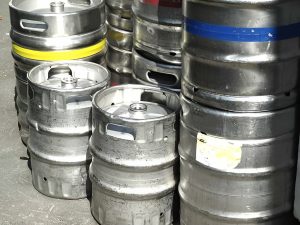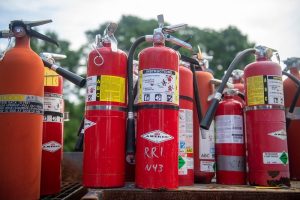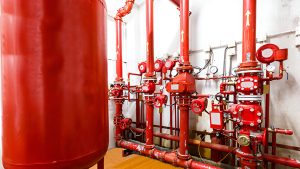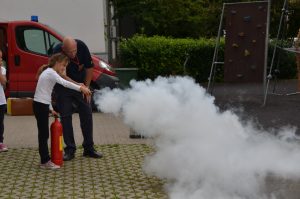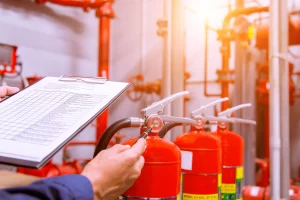Fire safety is a critical aspect of protecting lives, property, and the environment. One of the most essential tools in fire protection is the fire extinguisher. However, not all fire extinguishers are the same. In the United States, fire extinguishers are classified based on the type of fire they are designed to combat. Understanding the classes of fire extinguishers, how they work, and when to use them is crucial for ensuring safety in homes, workplaces, and public spaces. In this blog, we’ll explore the different fire extinguishers, their uses, and how to choose and maintain the right one for your needs. By the end, you’ll have a thorough understanding of fire extinguishers and how to use them effectively.
Understanding Fire Classes
Before diving into the types of fire extinguishers, it’s important to understand the different classes of fires. Fires are categorized based on the materials that fuel them, and each class requires a specific type of extinguisher. The five main classes of fires in the U.S. are:
- Class A: Fires involving ordinary combustibles like wood, paper, cloth, and plastics.
- Class B: Fires fueled by flammable liquids such as gasoline, oil, grease, and paint.
- Class C: Fires involving energized electrical equipment like appliances, wiring, and circuit breakers.
- Class D: Fires caused by combustible metals such as magnesium, titanium, and sodium.
- Class K: Fires involving cooking oils and fats, typically found in commercial kitchens.
Each class of fire requires a specific extinguishing agent to effectively put out the flames. Using the wrong type of extinguisher can be dangerous and may even worsen the situation. Now, let’s explore the different types of fire extinguisher classes designed to tackle these fires.
Water Fire Extinguishers (Class A)
Water fire extinguishers are among the most common types and are specifically designed for Class A fires. They are simple, effective, and environmentally friendly, as they use water to extinguish flames.
- How They Work: Water extinguishers discharge a stream of water to cool the burning material and remove heat from the fire triangle (heat, fuel, and oxygen). This cooling effect prevents the fire from
spreading and re-igniting. - Uses: Ideal for fires involving ordinary combustibles like wood, paper, textiles, and plastics. They are commonly found in homes, schools, and offices.
- Limitations: Water extinguishers should never be used on Class B (flammable liquids), Class C (electrical fires), or Class D (metal fires). Water can spread flammable liquids, conduct electricity, or react
violently with certain metals, making the fire worse. -
Dry Chemical Fire Extinguishers (Class A, B, C)
Dry chemical extinguishers are versatile and widely used fire extinguisher types and uses because they can handle multiple fire classes. They are available in two main types: ABC extinguishers, which contain monoammonium phosphate, and BC extinguishers, which
contain sodium bicarbonate or potassium bicarbonate.
- How They Work: Dry chemical extinguishers release a fine powder that interrupts the chemical reaction of the fire, effectively smothering it. The powder also creates a barrier between the fuel and the
oxygen, preventing re-ignition. - Uses: ABC extinguishers are suitable for Class A, B, and C fires, making them a popular choice for general-purpose use in homes, offices, and vehicles. BC extinguishers are designed for Class B and C fires only and are often used in areas with flammable liquids or electrical equipment.
- Limitations: The residue from dry chemical extinguishers can be corrosive and damaging to electronics, machinery, and sensitive equipment. They also require thorough cleanup after use.
Carbon Dioxide (CO2) Fire Extinguishers (Class B, C)
CO2 extinguishers are ideal for fires involving flammable liquids and electrical equipment. They are clean, non-conductive, and leave no residue, making them suitable for environments with sensitive electronics.
- How They Work: CO2 extinguishers discharge carbon dioxide gas, which displaces oxygen and suffocates the fire. The gas also has a cooling effect, which helps to extinguish the flames.
- Uses: Perfect for Class B (flammable liquids) and Class C (electrical fires) fires. They are commonly used in laboratories, server rooms, and areas with expensive electronics.
- Limitations: CO2 extinguishers are ineffective for Class A fires, as they do not cool the fire enough to prevent re-ignition. They also require proper ventilation, as the discharge of CO2 can reduce oxygen levels in confined spaces.
-
-
Wet Chemical Fire Extinguishers (Class K)
Wet chemical extinguishers are specifically designed for commercial kitchens and Class K fires involving cooking oils and fats. These fires can reach extremely high temperatures and are difficult to extinguish with traditional methods.
- How They Work: Wet chemical extinguishers release a fine mist that cools the fire and creates a soapy layer on the surface of the burning oil. This layer prevents re-ignition by sealing the fuel from the oxygen.
- Uses: Primarily used in restaurants, cafeterias, and commercial kitchens for fires involving cooking oils, fats, and grease.
- Limitations: Wet chemical extinguishers are not suitable for other fire classes and should only be used in kitchen environments.
-
Dry Powder Fire Extinguishers (Class D)
Dry powder extinguishers are designed for fires involving combustible metals, such as magnesium, titanium, and sodium. These fires require specialized extinguishing agents, as water or other common agents can react violently with the metals.
- How They Work: Dry powder extinguishers smother the fire and separate the fuel from the oxygen. They also absorb heat, which helps to cool the fire.
- Uses: Exclusively for Class D fires involving combustible metals. They are commonly found in industrial settings, laboratories, and facilities that handle metal powders or shavings.
- Limitations: Dry powder extinguishers are not effective for other fire classes and require specialized training to use safely.
-
Clean Agent Fire Extinguishers (Class A, B, C)
Clean agent extinguishers use halogenated or inert gases to extinguish fires without leaving residue. They are ideal for environments with sensitive equipment, such as data centers, museums, and laboratories.
- How They Work: Clean agents interrupt the chemical reaction of the fire and are non-conductive, making them safe for use on electrical fires. They also evaporate quickly, leaving no residue behind.
- Uses: Suitable for Class A, B, and C fires, especially in areas with expensive electronics, artwork, or historical artifacts.
- Limitations: Clean agent extinguishers can be expensive and may require specialized training to use. They also need to be used in well-ventilated areas, as the gases can displace oxygen.
-
Water Mist Fire Extinguishers (Class A, C)
Water mist extinguishers use deionized water to create a fine mist that cools the fire and displaces oxygen. They are safe for use on electrical fires because the water is deionized and does not conduct electricity.
- How They Work: The fine mist cools the fire and reduces oxygen levels, effectively extinguishing the flames. The deionized water ensures that the extinguisher is safe for use on electrical equipment.
- Uses: Ideal for Class A fires and safe for Class C fires involving electrical equipment. They are commonly used in hospitals, libraries, and areas with sensitive electronics.
- Limitations: Water mist extinguishers are not suitable for Class B or Class K fires.
-
How to Identify Fire Extinguishers
In the U.S., fire extinguishers are labeled with letters and symbols to indicate the types of fires they can combat. Here’s a quick guide to understanding the labels:
- Class A: Green triangle with the letter “A.”
- Class B: Red square with the letter “B.”
- Class C: Blue circle with the letter “C.”
- Class D: Yellow star with the letter “D.”
- Class K: Black hexagon with the letter “K.”
Many extinguishers are multipurpose and will have multiple labels, such as “ABC” or “BC.” Always check the label to ensure you’re using the right extinguisher for the type of fire.
Choosing the Right Fire Extinguisher
Selecting the right fire extinguisher depends on the specific hazards in your environment. Here are some tips for choosing the appropriate extinguisher:
- Homes: ABC extinguishers are a good all-purpose choice for most households. They can handle fires involving ordinary combustibles, flammable liquids, and electrical equipment.
- Offices: ABC or clean agent extinguishers are ideal, especially in areas with computers, printers, and other electronics.
- Kitchens: Wet chemical extinguishers are essential for commercial kitchens, while ABC extinguishers can suffice for home kitchens.
- Garages: BC or ABC extinguishers are suitable for flammable liquids and electrical equipment commonly found in garages.
- Industrial Settings: Class D extinguishers are necessary for facilities handling combustible metals, while ABC extinguishers can handle general-purpose fires.
Maintenance and Training
Having the right fire extinguisher is only part of the equation. Regular maintenance and proper training are essential to ensure effectiveness. Here are some key points to keep in mind:
- Inspection: Check extinguishers monthly for visible damage, pressure levels, and accessibility. Ensure that the pin and seal are intact and that the nozzle is not clogged.
- Professional Servicing: Have extinguishers inspected and serviced annually by a certified professional. This includes checking the pressure, refilling if necessary, and replacing any damaged parts.
- Training: Ensure that everyone in your home or workplace knows how to use a fire extinguisher. Remember the acronym PASS:
- Pull the pin.
- Aim the nozzle at the base of the fire.
- Squeeze the handle.
- Sweep from side to side.
Conclusion
Fire extinguishers are a vital component of fire safety, but not all extinguishers are created equal. Understanding the different types of fire extinguishers and their uses can make the difference between a minor incident and a catastrophic event. By selecting the right extinguisher for your needs, maintaining it properly, and ensuring that everyone knows how to use it, you can significantly enhance your preparedness for fire emergencies. Stay safe, stay informed, and always prioritize fire safety in your home and workplace.
FAQs
1. How many types of fire extinguishers are there?
There are six main types of fire extinguishers: water, dry chemical, CO₂, wet chemical, dry powder, and clean agent.
2. What is a Class C fire extinguisher?
A Class C fire extinguisher is designed to safely extinguish fires involving energized electrical equipment or wiring.
3. What are the types of fire extinguishers?
The main types include water, dry chemical, CO₂, wet chemical, dry powder, clean agent, and water mist extinguishers.
4. What is a water mist extinguisher used for?
A Water Mist Extinguisher is used to safely tackle Class A fires involving wood, paper, fabrics and some electrical fires, by releasing fine water droplets that cool and suppress flames effectively.
5. Which type of fire extinguisher is used for fire on electrical equipment?
CO₂, dry chemical (ABC), and clean agent extinguishers are recommended for safely handling electrical fires.
6. What is a Class B fire extinguisher used for?
A Class B fire extinguisher is used to put out fires involving flammable liquids like gasoline, oil, grease, and paints.

